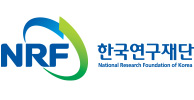1. INTRODUCTION
During the screening of indigenous prokaryotic species from freshwater environments in the Republic of Korea in 2024, several bacterial strains belonging to previously unrecorded species were isolated. The identified bacterial strains were assigned to the phyla Bacteroidota and Bacillota. These are major bacterial groups with distinct characteristics and ecological roles (Oren and Garrity 2021).
Bacteroidota is a highly diverse phylum of Gram-neg- ative bacteria, which was renamed from “Bacteroidetes” in 2021 (Oren and Garrity 2021). Many of which are found in environments such as marine and freshwater ecosystems, as well as in the human and animal gut microbiomes. As of the time of writing, taxonomic classification based on 16S rRNA gene has identified six classes within the phylum Bacteroidota, including Bacteroidia, Chitinophagia, Cytophagia, Flavobacteriia, Saprospiria, and Sphingobacteriia. Members of this phylum play essential roles in the degradation of complex organic materials, particularly polysaccharides, and are vital for maintaining nutrient cycling in ecosystems (McKee et al. 2021).
Bacillota is the largest bacterial phylum, was renamed from “Firmicutes” in 2021 (Oren and Garrity 2021). This phylum consists of Gram-positive bacteria that are widely distributed in various environments, including soil, water, and the gastrointestinal tracts of humans and animals (Thomas et al. 2011;Sun et al. 2016). Members of this phylum are involved in crucial biological processes such as fermentation, biodegradation, and nutrient cycling. Based on 16S rRNA gene sequences, Bacillota has been classified into seven classes: Bacilli, Clostridia, Culicoidibacteria, Erysipelotrichia, Limnochordia, Negativicutes, and Thermolithobacteria. Some members of this phylum are of significant medical or industrial importance due to their involvement in diseases or the production of bioactive compounds (Galperin et al. 2022).
In this study, we obtained 21 unrecorded bacterial isolates from freshwater environments. These isolates, belonging to the phyla Bacteroidota and Bacillota, were assigned to seven genera (Mucilaginibacter, Pedobacter, Flavobacterium, Gillisia, Hymenobacter, Paenibacillus, and Planococcus) across four classes (Sphingobacteriia, Flavobacteriia, Cytophagia, and Bacilli), based on their 16S rRNA gene sequences. Basic characteristics of the isolates, including Gram reaction, cell morphology, and biochemical properties, were also examined and described.
2. MATERIALS AND METHODS
A total of 21 bacterial strains were isolated from water and sediment samples of a freshwater environment using the standard dilution plating method on various culture media, including Reasoner’s 2A (R2A; BD), 1/10-diluted R2A (0.1 R2A), marine agar 2211 (MA; BD), 1/10-diluted MA (0.1 MA), nutrient agar (NA), 1/10-diluted NA (0.1 NA), 1/10-diluted tryptic soy agar (0.1 TSA) and inorganic Salts Starch (ISP) Agar 4. Pure cultures of the bacterial isolates were preserved at -80°C as a suspension in 20% (w/v) glycerol. The strain IDs, isolation sources, and culture media are provided in Table 1.
For colony morphology determination, bacterial colonies that reached the stationary phase were examined on agar plates. Cellular morphology was analyzed by transmission electron microscopy (Talos L120C; Thermo Fisher Scientific, USA). Gram staining was performed using a Gram-staining kit (bioMérieux, France). Biochemical characteristics were assessed using the API 20NE (bioMérieux), following the manufacturer’s instructions. Oxidase activity was measured using an oxidase reagent (bioMérieux).
Bacterial DNA extraction, PCR amplification and 16S rRNA gene sequencing were performed according to the standard procedures described by Weisburg et al. (1991). The 16S rRNA gene sequences were obtained using the primers 785F and 907R by Macrogen (Korea). The sequence data were compared using the EzBio Cloud server (Yoon et al. 2017), with a sequence similarity cutoff value of 98.7%. Bacterial strains exhibiting ≥98.7% sequence similarity with type strains previously unreported in Republic of Korea were selected as unreported bacterial species. The phylogenetic tree was constructed by using neighbor-joining algorithm (Saitou and Nei 1987) implemented in the MEGA 11 software (Tamura et al. 2021), with 1,000 random resamplings (Felsenstein 1985).
3. RESULTS AND DISCUSSION
Phylogenetic analysis based on the 16S rRNA gene indicated that 21 strains, previously unrecorded in Korea, were classified into two phyla; Bacteroidota (Fig. 1) and Bacillota (Fig. 2). The strains in the phylum Bacteroidota were found to belong to 5 separate genera of 3 classes; Mucilaginibacter (1 species), Pedobacter (2 species), Flavobacterium (10 species), Gillisia (1 species), Hymenobacter (1 species). The strains in the phylum Bacillota were classified into 2 separate genera of 1 class: Paenibacillus (1 species), Planococcus (1 species). The strain information, species identification, sequence accession numbers from NNIBR and GenBank, and isolation source are listed in Table 1. Transmission electron microscopic images of the isolates are presented in Figure 3. Detailed descriptions of the morphological, physiological, and basic biochemical characteristics of the 21 isolated strains are provided in the following strain descriptions. Herein, 21 bacterial strains collected from freshwater environments in Korea are reported as previously unrecorded species of the phyla Bacteroidota and Bacillota.
This study identified and scientifically documented unrecorded bacterial species in Korea, contributing to the expansion of the national microbial diversity database. The findings of this study serve as fundamental data not only for microbial taxonomy and ecology but also for biotechnology and environmental research. Future research should focus on a more detailed analysis of the functional characteristics of this bacterial species, including its potential for metabolite production, bioactive compound discovery, environmental remediation, and biotechnological applications.
In conclusion, this study demonstrates that microbial diversity research extends beyond taxonomic discoveries to exploring various industrial applications. A multifaceted approach integrating genomics, biochemistry, and ecology will be necessary to further elucidate the potential applications of unrecorded bacterial species.
3.1. Description of Mucilaginibacter auburnensis 24SJ04W-126
The cells are Gram-stain-negative, non-flagellated, short rod-shaped, and aerobic. Colonies grown on R2A are circular, smooth, and convex, with a slimy or mucoid texture, and appear yellow to light brown after incubation for 2-3 days at 20°C. Positive for esculin hydrolysis and β-galactosidase activities. Negative for oxidase, nitrate reduction, indole production, glucose fermentation, arginine dihydrolase, urease, and gelatin hydrolysis. Utilizes D-glucose, L-arabinose, D-mannose, D-mannitol, N-acetyl-glucosamine, D-maltose, and trisodium citrate. Does not utilize potassium gluconate, capric acid, adipic acid, malic acid, and phenylacetic acid. Strain 24SJ04W-126 (=NNIBR202411BA1560 =FBCC-B17888) was isolated from a freshwater sample in Jangsu, Jeollabuk-do, Korea. The GenBank accession number for the 16S rRNA gene sequence is PP784581.
3.2. Description of Pedobacter miscanthi 24SJ08S1-42
The cells are Gram-stain-negative, non-flagellated, short rod-shaped, and aerobic. Colonies grown on R2A are irregular, raised, filiform, and ivory pink after incubation for 4-5 days at 25°C. Positive for oxidase, esculin hydrolysis, gelatin hydrolysis, and β-galactosidase activities. Negative for nitrate reduction, indole production, glucose fermentation, arginine dihydrolase, and urease. Utilizes D-glucose, L-arabinose, D-mannose, N-acetylglucosamine, D-maltose, malic acid, and trisodium citrate. Does not utilize D-mannitol, potassium gluconate, capric acid, adipic acid, and phenylacetic acid. Strain 24SJ08S1-42 (=NNIBR202411BA2318=FBCCB18780) was isolated from a sediment of freshwater sample in Gurye, Jeollanam-do, Korea. The GenBank accession number for the 16S rRNA gene sequence is PP800307.
3.3. Description of Pedobacter foliorum 24SJ09S1-28
The cells are Gram-stain-negative, non-flagellated, short rod-shaped, and aerobic. Colonies grown on 0.1 TSA are irregular, pulvinate, undulate, and white after incubation for 4-5 days at 25°C. Positive for oxidase, esculin hydrolysis, and β-galactosidase activities. Negative for nitrate reduction, indole production, glucose fermentation, arginine dihydrolase, urease, and gelatin hydrolysis. Utilizes D-glucose, D-mannose, N-acetylglucosamine, D-maltose, potassium gluconate, and trisodium citrate. Does not utilize L-arabinose, D-mannitol, capric acid, adipic acid, malic acid, and phenylacetic acid. Strain 24SJ09S1-28 (=NNIBR202411BA2321 =FBCC-B18783) was isolated from a sediment of freshwater sample in Gurye, Jeollanam-do, Korea. The Gen Bank accession number for the 16S rRNA gene sequence is PP800310.
3.4. Description of Pedobacter fastidiosus MK16
The cells are Gram-stain-negative, non-flagellated, short rod-shaped, and aerobic. Colonies grown on 0.1 R2A are irregular, raised, and bright red after incubation for 7 days at 25°C. Positive for oxidase, esculin hydrolysis, and β-galactosidase activities. Negative for nitrate reduction, indole production, glucose fermentation, arginine dihydrolase, urease, and gelatin hydrolysis. Utilizes D-glucose, L-arabinose, D-mannose, D-mannitol, N-acetyl-glucosamine, D-maltose, potassium gluconate, adipic acid, and malic acid. Does not utilize capric acid, trisodium citrate, and phenylacetic acid. Strain MK16 (=NNIBR202411BA2611=FBCC-B18783) was isolated from a freshwater sample in Ulsan, Korea. The Gen Bank accession number for the 16S rRNA gene sequence is PP800255.
3.5. Description of Pedobacter steynii 24SJ13W-007
The cells are Gram-stain-negative, non-flagellated, short rod-shaped, and aerobic. Colonies grown on 0.1 MA are irregular, raised, and yellow after incubation for 7 days at 25°C. Positive for oxidase, esculin hydrolysis, gelatin hydrolysis, and β-galactosidase activities. Negative for nitrate reduction, indole production, glucose fermentation, arginine dihydrolase, and urease. Utilizes D-glucose, L-arabinose, D-mannose, N-acetyl-glucosamine, D-maltose, potassium gluconate, adipic acid, malic acid, and trisodium citrate. Does not utilize Dmannitol, capric acid, and phenylacetic acid. Strain 24SJ13W-007 (=NNIBR202411BA2619=FBCC-B19 131) was isolated from a freshwater sample in Gwangyang, Jeollanam-do, Korea. The GenBank accession number for the 16S rRNA gene sequence is PP800266.
3.6. Description of Flavobacterium shii 24SJ05S-33
The cells are Gram-stain-negative, non-flagellated, short rod-shaped, and aerobic. Colonies grown on 0.1 TSA are smooth, circular, convex, and yellow after incubation for 2-3 days at 20°C. Positive for oxidase, nitrate reduction, esculin hydrolysis, gelatin hydrolysis, and β-galactosidase activities. Negative for indole production, glucose fermentation, arginine dihydrolase, and urease. Utilizes D-glucose, D-mannose, D-maltose, and trisodium citrate. Does not utilize L-arabinose, D-mannitol, N-acetyl-glucosamine, potassium gluconate, capric acid, adipic acid, malic acid, and phenylacetic acid. Strain 24SJ05S-33 (=NNIBR202411BA1565=FBCCB17893) was isolated from a sediment of freshwater sample in Jangsu, Jeollabuk-do, Korea. The GenBank accession number for the 16S rRNA gene sequence is PP784621.
3.7. Description of Flavobacterium salmonis 24SJ02W-92
The cells are Gram-stain-negative, non-flagellated, rod-shaped, and aerobic. Colonies grown on ISP4 are irregular, raised, filiform, and yellow after incubation for 4-5 days at 25°C. Positive for oxidase, nitrate reduction, esculin hydrolysis, and β-galactosidase activities. Negative for indole production, glucose fermentation, arginine dihydrolase, urease, and gelatin hydrolysis. Utilizes D-glucose, D-mannose, D-maltose, capric acid, and malic acid. Does not utilize L-arabinose, D-mannitol, N-acetyl-glucosamine, potassium gluconate, adipic acid, trisodium citrate, and phenylacetic acid. Strain 24SJ02W-92 (=NNIBR202411BA2311=FBCC-B18773) was isolated from a freshwater sample in Jinan, Jeollabuk- do, Korea. The GenBank accession number for the 16S rRNA gene sequence is PP800277.
3.8. Description of Flavobacterium frigoritolerans 24SJ08W-51
The cells are Gram-stain-negative, non-flagellated, rod-shaped, and aerobic. Colonies grown on 0.1 R2A are circular, raised, entire, and ivory yellow after incubation for 4-5 days at 25°C. Positive for oxidase, esculin hydrolysis, and β-galactosidase activities. Negative for nitrate reduction, indole production, glucose fermentation, arginine dihydrolase, urease, and gelatin hydrolysis. Utilizes L-arabinose, N-acetyl-glucosamine, and trisodium citrate. Does not utilize D-glucose, Dmannose, D-mannitol, D-maltose, potassium gluconate, capric acid, adipic acid, malic acid and phenylacetic acid. Strain 24SJ08W-51 (=NNIBR202411 BA2317=FBCC-B18779) was isolated from a freshwater sample in Gurye, Jeollanam-do, Korea. The GenBank accession number for the 16S rRNA gene sequence is PP800288.
3.9. Description of Flavobacterium turcicum MK24
The cells are Gram-stain-negative, non-flagellated, rod-shaped, and aerobic. Colonies grown on 0.1 NA are circular, raised, and yellow after incubation for 7 days at 25°C. Positive for oxidase, esculin hydrolysis, and β- galactosidase activities. Negative for nitrate reduction, indole production, glucose fermentation, arginine dihydrolase, urease, and gelatin hydrolysis. Utilizes N-acetyl- glucosamine, D-maltose, and potassium gluconate. Does not utilize D-glucose, L-arabinose, D-mannose, D-mannitol, capric acid, adipic acid, malic acid, trisodium citrate, and phenylacetic acid. Strain MK24 (=NNIBR202411BA2612=FBCC-B19138) was isolated from a freshwater sample in Ulsan, Korea. The Gen Bank accession number for the 16S rRNA gene sequence is PP800259.
3.10. Description of Flavobacterium erciyesense BB16
The cells are Gram-stain-negative, non-flagellated, rod-shaped, and aerobic. Colonies grown on 0.1 R2A are circular, raised, and bright yellow after incubation for 7 days at 25°C. Positive for oxidase and esculin hydrolysis. Negative for nitrate reduction, indole production, glucose fermentation, arginine dihydrolase, urease, gelatin hydrolysis, and β-galactosidase activities. Utilizes D-mannose. Does not utilize D-glucose, L-arabinose, D-mannitol, N-acetyl-glucosamine, D-maltose, potassium gluconate, capric acid, adipic acid, malic acid, trisodium citrate, and phenylacetic acid. Strain BB16 (=NNIBR202411BA2614=FBCC-B19136) was isolated from a freshwater sample in Gyeongju, Gyeongsangbuk- do, Korea. The GenBank accession number for the 16S rRNA gene sequence is PP800264.
3.11. Description of Flavobacterium muglaense 24GG02W-64
The cells are Gram-stain-negative, non-flagellated, rod-shaped, and aerobic. Colonies grown on NA are circular, convex, smooth, and yellow after incubation for 2-3 days at 20°C. Positive for oxidase and esculin hydrolysis. Negative for nitrate reduction, indole production, glucose fermentation, arginine dihydrolase, urease, gelatin hydrolysis, and β-galactosidase activities. Does not utilize D-glucose, L-arabinose, D-mannose, D-mannitol, N-acetyl-glucosamine, D-maltose, potassium gluconate, capric acid, adipic acid, malic acid, trisodium citrate, and phenylacetic acid. Strain 24GG 02W-64 (=NNIBR202411BA1554=FBCC-B17882) was isolated from a freshwater sample in Yesan, Chungcheongnam- do, Korea. The GenBank accession number for the 16S rRNA gene sequence is PP784640.
3.12. Description of Flavobacterium proteolyticum 24GG02W-36
The cells are Gram-stain-negative, non-flagellated, rod-shaped, and aerobic. Colonies grown on R2A are circular, convex, smooth, and yellow after incubation for 7 days at 25°C. Positive for oxidase and esculin hydrolysis. Negative for nitrate reduction, indole production, glucose fermentation, arginine dihydrolase, urease, gelatin hydrolysis, and β-galactosidase activities. Utilizes D-glucose, L-arabinose, D-mannitol, D-maltose, potassium gluconate, adipic acid, and trisodium citrate. Does not utilize D-mannose, N-acetyl-glucosamine, capric acid, malic acid, and phenylacetic acid. Strain 24GG02W-36 (=NNIBR202411BA2230=FBCC-B186 92) was isolated from a freshwater sample in Yesan, Chungcheongnam-do, Korea. The GenBank accession number for the 16S rRNA gene sequence is PP784639.
3.13. Description of Flavobacterium tegetincola 24GG06W-69
The cells are Gram-stain-negative, non-flagellated, rod-shaped, and aerobic. Colonies grown on NA are circular, convex, smooth, and yellow after incubation for 2-3 days at 20°C. Positive for oxidase, glucose fermentation, esculin hydrolysis, gelatin hydrolysis, and β-galactosidase activities. Negative for nitrate reduction, indole production, arginine dihydrolase, and urease. Utilizes D-glucose, trisodium citrate, phenylacetic acid, and trisodium citrate. Does not utilize L-arabinose, D-mannose, D-mannitol, N-acetyl-glucosamine, D-maltose, potassium gluconate, capric acid, adipic acid, malic acid, and phenylacetic acid. Strain 24GG06W-69 (=NNIBR 202411BA1937=FBCC-B18689) was isolated from a freshwater sample in Cheonan, Chungcheongnam-do, Korea. The GenBank accession number for the 16S rRNA gene sequence is PQ084581.
3.14. Description of Flavobacterium akiainvivens 24HG03W-66
The cells are Gram-stain-negative, non-flagellated, rod-shaped, and aerobic. Colonies grown on 0.1 R2A are circular, convex, smooth, and white after incubation for 7 days at 25°C. Positive for oxidase, esculin hydrolysis, gelatin hydrolysis, and β-galactosidase activities. Negative for nitrate reduction, indole production, glucose fermentation, arginine dihydrolase, and urease. Utilizes D-glucose, L-arabinose, D-mannose, D-maltose, potassium gluconate, capric acid, adipic acid, and trisodium citrate. Does not utilize D-mannitol, N-acetylglucosamine, malic acid, and phenylacetic acid. Strain 24HG03W-66 (=NNIBR202411BA2238=FBCCB18700) was isolated from a freshwater sample in Inje, Gangwon-do, Korea. The GenBank accession number for the 16S rRNA gene sequence is PQ084672.
3.15. Description of Flavobacterium arcticum 24SH05W-34
The cells are Gram-stain-negative, non-flagellated, filamentous-shaped, and aerobic. Colonies grown on 0.1 TSA are circular, convex, smooth, and white after incubation for 7 days at 25°C. Positive for oxidase and esculin hydrolysis. Negative for nitrate reduction, indole production, glucose fermentation, arginine dihydrolase, urease, gelatin hydrolysis, and β-galactosidase activities. Does not utilize D-glucose, L-arabinose, Dmannose, D-mannitol, N-acetyl-glucosamine, D-maltose, potassium gluconate, capric acid, adipic acid, malic acid, trisodium citrate, and phenylacetic acid. Strain 24SH05W-34 (=NNIBR202411BA2235=FBCC-B186 97) was isolated from a brackish water sample in Sokcho, Gangwon-do, Korea. The GenBank accession number for the 16S rRNA gene sequence is PQ106804.
3.16. Description of Gillisia myxillae 24SH02W-9
The cells are Gram-stain-negative, non-flagellated, rod-shaped, and aerobic. Colonies grown on 0.1 MA are circular, convex, smooth, and yellow after incubation for 3 days at 20°C. Positive for oxidase, esculin hydrolysis, and gelatin hydrolysis. Negative for nitrate reduction, indole production, glucose fermentation, arginine dihydrolase, urease, and β-galactosidase activities. Utilizes N-acetyl-glucosamine, potassium gluconate, adipic acid, and trisodium citrate. Does not utilize D-glucose, L-arabinose, D-mannose, D-mannitol, Dmaltose, capric acid, malic acid, and phenylacetic acid. Strain 24SH02W-9 (=NNIBR202411BA1819=FBCCB18144) was isolated from a brackish water sample in Gangneung, Gangwon-do, Korea. The GenBank accession number for the 16S rRNA gene sequence is PQ084 684.
3.17. Description of Hymenobacter frigidus 24SJ09S1-49
The cells are Gram-stain-negative, non-flagellated, rod-shaped, and aerobic. Colonies grown on 0.1 R2A are circular, raised, entire, and pink after incubation for 4-5 days at 25°C. Positive for oxidase and esculin hydrolysis. Negative for nitrate reduction, indole production, glucose fermentation, arginine dihydrolase, urease, gelatin hydrolysis, and β-galactosidase activities. Does not utilize D-glucose, L-arabinose, D-mannose, D-mannitol, N-acetyl-glucosamine, D-maltose, potassium gluconate, capric acid, adipic acid, malic acid, trisodium citrate, and phenylacetic acid. Strain 24SJ 09S1-49 (=NNIBR202411BA2320=FBCC-B18782) was from a sediment of freshwater sample in Gurye, Jeollanam-do, Korea. The GenBank accession number for the 16S rRNA gene sequence is PP800309.
3.18. Description of Paenibacillus thailandensis 23ND72S-072
The cells are Gram-stain-positive, non-flagellated, rod-shaped, and aerobic. Colonies grown on 0.1 TSA are circular, raised, and pale red orange after incubation for 7 days at 25°C. Positive for esculin hydrolysis. Negative for oxidase, nitrate reduction, indole production, glucose fermentation, arginine dihydrolase, urease, gelatin hydrolysis, and β-galactosidase activities. Utilizes D-glucose, L-arabinose, D-mannose, D-mannitol, N-acetyl- glucosamine, potassium gluconate, malic acid, and trisodium citrate. Does not utilize D-maltose, capric acid, adipic acid, and phenylacetic acid. Strain 23ND 72S-072 (=NNIBR202411BA2615=FBCC-B19135) was isolated from a freshwater sediment sample in Yeongdeok, Gyeongsangbuk-do, Korea. The GenBank accession number for the 16S rRNA gene sequence is PP784648.
3.19. Description of Planococcus wigleyi 24SJ04W-141
The cells are Gram-stain-positive, non-flagellated, spherical, form short chains, and aerobic. Colonies grown on MA are circular, convex, smooth, and yellow to orange after incubation for 2-3 days at 20°C. Positive for nitrate reduction, esculin hydrolysis and β-galactosidase activities. Negative for oxidase, indole production, glucose fermentation, arginine dihydrolase, urease and gelatin hydrolysis. Utilizes D-glucose, Dmannose, D-maltose, potassium gluconate, and trisodium citrate. Does not utilize L-arabinose, D-mannitol, N-acetyl-glucosamine, capric acid, adipic acid, malic acid, and phenylacetic acid. Strain 24SJ04W-141 (=NNIBR202411BA1559=FBCC-B17887) was isolated from a freshwater sample in Jangsu, Jeollabuk-do, Korea. The GenBank accession number for the 16S rRNA gene sequence is PP784580.
3.20. Description of Planococcus chinensis 24SJ22S-82
The cells are Gram-stain-positive, non-flagellated, short rod-shaped, and aerobic. Colonies grown on MA are circular, convex, smooth, and orange after incubation for 2-3 days at 20°C. Positive for oxidase, nitrate reduction, glucose fermentation, urease, esculin hydrolysis, and gelatin hydrolysis. Negative for indole production, arginine dihydrolase, and β-galactosidase activities. Utilizes D-glucose, D-mannitol, N-acetyl-glucosamine, D-maltose, and potassium gluconate. Does not utilize L-arabinose, D-mannose, capric acid, adipic acid, malic acid, trisodium citrate, and phenylacetic acid. Strain 24SJ22S-82 (=NNIBR202411BA1570=FBCCB17898) was isolated from a sediment of freshwater sample, Sunchang in Jeollabuk-do Korea. The GenBank accession number for the 16S rRNA gene sequence is PQ084582.
3.21. Description of Planococcus glaciei 24SJ22S-99
The cells are Gram-stain-positive, non-flagellated, spherical, form short chains, and aerobic. Colonies grown on R2A are circular, convex, smooth, and yellow after incubation for 2-3 days at 20°C. Positive for oxidase, nitrate reduction, glucose fermentation, urease, esculin hydrolysis, gelatin hydrolysis, and β-galactosidase activities. Negative for indole production, and arginine dihydrolase. Utilizes D-glucose, D-mannitol, N-acetyl-glucosamine, D-maltose, potassium gluconate, malic acid, and trisodium citrate. Does not utilize L-arabinose, D-mannose, capric acid, adipic acid, and phenylacetic acid. Strain 24SJ22S-99 (=NNIBR202411 BA1938=FBCC-B18690) was isolated from a sediment of freshwater sample in Sunchang, Jeollabuk-do, Korea. The GenBank accession number for the 16S rRNA gene sequence is PQ084583.


















